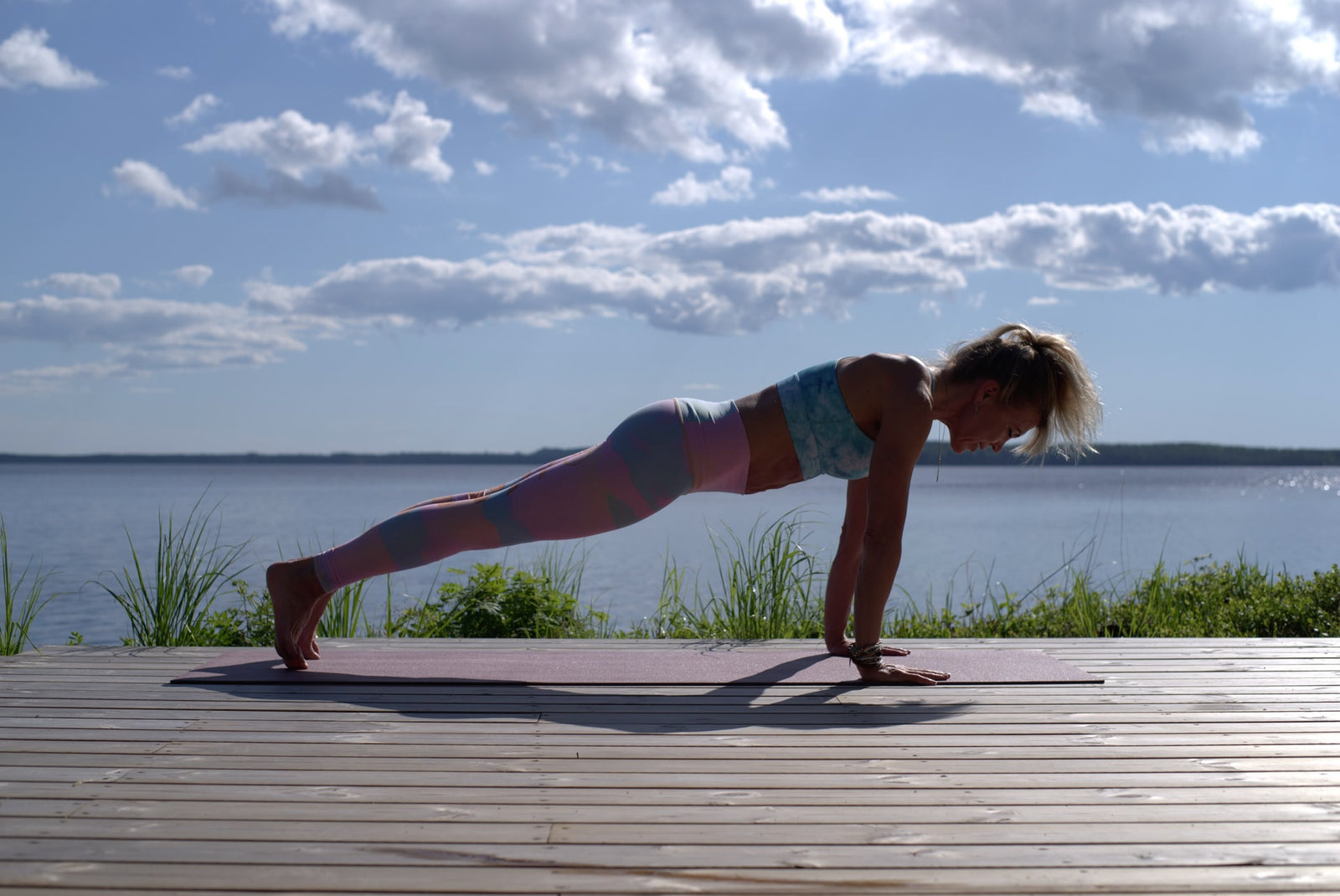Photo by BBH Singapore on Unsplash
Women nearing their mid-40s are most likely aware of one imminent thing: menopause. Some have a tough time because of symptoms (read: hot flushes, heavier or lighter period, mood swings).
But while these symptoms may sound unpleasant, good news is that they’re highly treatable through medications, therapies, home remedies, and lifestyle changes.
What is Menopause?
Menopause is a normal biological process for women accompanied by uncomfortable symptoms. It is an indication of the aging of the ovaries, decrease in the production of reproductive hormones, and loss of ability to naturally get pregnant. It occurs when a woman hasn’t menstruated in 12 straight months. In the US and UK, the average age this happens is 51 years old. [1,2] It can happen naturally or induced.
It can be split into three phases:
- Perimenopause, the stage when hormones begin to change in preparation for menopause. It can start at around the age of 45 (sometimes earlier, called premature menopause [cite]), and will last until the time when the ovaries finally stop releasing eggs. At this early stage, many women will already experience menopause symptoms.
- Menopause, which is the time when a woman no longer has menstrual periods. At this point, ovaries have stopped releasing eggs and creating most of their estrogen.
- Postmenopause is the period after a woman has not bled in a year. Menopausal symptoms may have eased already at this point for most women, but not for some. However, women at this point have a higher risk for serious conditions such as osteoporosis and heart disease due to lower estrogen levels.
However, sometimes, it can be triggered suddenly when induced, usually by removal of the ovaries by surgery, or by ovaries shutdown related to a medical condition.
What are the symptoms?
Some women, upon transitioning to perimonopause, may experience some or all of these symptoms: [3]
- hot flashes (brief, sudden sensation of heat over the entire body)
- night sweats
- irregular menstruation
- heavier or lighter periods than normally experienced
- worsening of premenstrual syndrome (PMS)
- breasts soreness
The reduced production of estrogen and fluctuations in hormone levels during all stages of menopause can also cause the following:
- insomnia
- vaginal dryness
- reduced libido, or sex drive
- increase in weight
- emotional instability (irritability, mild depression, mood swings)
- difficulty concentrating and memory problems
- dry skin, mouth, and eyes
- headaches
- racing heart
- painful or stiff joints
- hair thinning or loss, while for others, facial hair growth
- increased urination
- urinary tract infections (UTIs)
- reduced muscle and bone mass
Depending on lifestyle, family history, and overall health condition, the following are possible health risks after menopause: [4,5]
- osteoporosis
- cardiovascular disease
Options You Can Try when Treating Menopause Symptoms
Women experience menopause differently. Some encounter it with a range of symptoms while some only got a few. Some, due to low tolerance to pain, may even have painful episodes while some may consider not needing any treatments at all. For those who may need it, the usual treatments are either of the two:
Hormone Therapy
Ovaries do not produce enough estrogen and progesterone during menopause, so boosting the levels of these hormones through hormone therapy is an option. It can ease many symptoms such as hot flashes, vaginal dryness, hair loss, and emotional stress. It is also used as a precaution for osteoporosis.
There are two types: [6]
1. Estrogen Therapy (ET)
Estrogen is taken alone, generally recommended in low doses. It usually comes in pills or a patch, but can also be prescribed in cream, vaginal ring, gel, or spray forms.
2. Estrogen Progesterone/Progestin Hormone Therapy (EPT)
This is a combination of estrogen and progesterone, available in its natural form or synthetic (progestin).
Non-hormonal Therapies
Since hormonal therapies are not for everyone, your medical practitioner may recommend changes in your diet and lifestyle. These are endorsed for women with other existing medical conditions:
3. Change in Diet
Restricting your intake of spicy foods and caffeine decreases the severity of hot flashes. You can also incorporate plant estrogen (isoflavones) in your meals, like legumes such as soybeans, chickpeas, lentils, and other fruits and nuts.
4. Change in Lifestyle
Light to moderate exercises can help relieve other symptoms such as insomnia, while calm, tranquil types like yoga can help with easing mood swings and alleviating anxieties. Weight loss resulting from exercise and a healthy diet can also help to lessen hot flashes.
5. Communicating issues to support groups
Talking to family, friends, or a therapist or psychologist about your experiences can be a great help to sort out and manage the different emotions during menopause.
6. Identifying triggers and possible non-hormonal medicines for hot flashes
Since hot flashes are experienced by almost 75% of menopausal women, [3] practitioners will almost always advise you to manage your room temperatures to cool day and night, wear layered and comfortable clothes, and quitting smoking.
7. Considering dietary supplements
Consult your doctor about supplements that you can take. Taking supplements that address menopause symptoms such as VALI Balance can help in relief and lessening of health risks. Other disruptive symptoms such as insomnia can be aided by taking sleep supplements.
What's next?
The transition period of perimenopause, menopause and postmenopause can cause hot flashes, night sweats, vaginal dryness, urinary discomfort, sleeping issues, irritability, mood swings, headaches, low energy and weight gain. Balance supplements in your body with five natural herbs and nutrients that act to care for and help your body adjust to changing estrogen and hormone levels, and reduce discomfort from menopausal symptoms that get in the way of your life.
Read more about VALI Balance Menopause Relief here.
Sources:
[1] https://www.mayoclinic.org/diseases-conditions/menopause/symptoms-causes/syc-20353397
[2] https://www.nhs.uk/conditions/menopause/
[3] https://www.healthline.com/health/menopause#symptoms
[4] https://pubmed.ncbi.nlm.nih.gov/17364594/
[5] https://www.webmd.com/menopause/guide/osteoporosis-menopause#1
[6] https://www.webmd.com/menopause/guide/menopause-hormone-therapy#1








